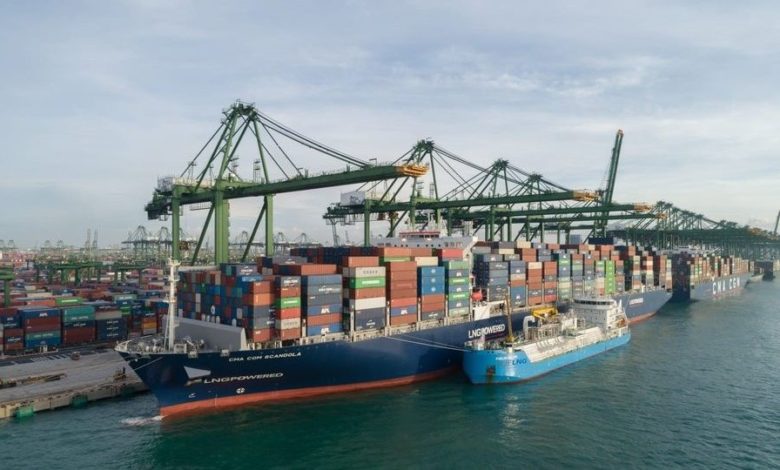LNG bunker prices near record high

Oil prices dropped 10% last week to levels not seen since Russia invaded Ukraine in February. In the bunker markets, this has been reflected by an ever greater margin in pricing between traditional fuels and LNG with the latter now on course to hit record highs soon, with many of today’s LNG dual-fuelled ships deciding not to take on gas.
For LNG bunkers in Rotterdam priced by Ship & Bunker on an energy equivalency of one metric ton of IFO380 bunkers, meaning HSFO, prices are currently hovering at $2,621 per ton, threatening to eclipse former records of $2,673 per ton set this March.
LNG bunker sales in Rotterdam plunged 43% lower in Q2 to just 63,000 cu m. Sales of the gas fuel had been on a steady rise for years through to the start of this year when the pricing gap with conventional fuels made them uneconomic.
Despite the drop recorded in Rotterdam, Europe’s top bunkering hub, LNG bunker sales globally have been ticking up in recent months, according to online platform BunkerEx.
“What has surprised us is the number of suppliers seems to be increasing too, which is a key component to make LNG truly competitive with other fuels,” Ishaan Hemnani, BunkerEx’s CEO, told Splash today.
“We are seeing a little more demand, but that’s probably just the market building out or people expecting the spread to get even worse come winter,” Hemnani added.
Latest data from shipping classification society DNV suggests that the global LNG-fuelled fleet has expanded by nearly 60% over the past two years, with 304 vessels now in operation.
Around 4.5% of the global fleet by tonnage – or 1% of ships by numbers – is alternative fuel capable, mostly LNG, according to Clarksons Research.
Clear figures on how many of these 300+ dual-fuelled ships are using LNG today remains opaque.
A spokesperson from Integr8 Fuels’ research department commented: “Most owners of dual-fuel tonnage buying on the spot market are likely purchasing VLSFO/LSMGO as indeed the differential is not in favour of LNG. Some of these would still bunker LNG as a one-off for marketing purposes and we’ve seen a few press releases about it recently. Some would probably have some kind of take or pay contracts that tie them up to buying it anyways while others will be lifting in US where LNG bunkers are more competitive, particularly compared with LSMGO.”
The majority of dual-fuel owners will have switched to conventional fuels given the price gap, the spokesperson stressed.
“Being alternative fuel capable or ready is nothing but an expensive, non-committal greenwashing exercise as long as everyone with dual-fuel engines burns fuel oil anyway,” argued Roar Adland, shipping professor at the Norwegian School of Economics, in a widely read recent post on LinkedIn.
